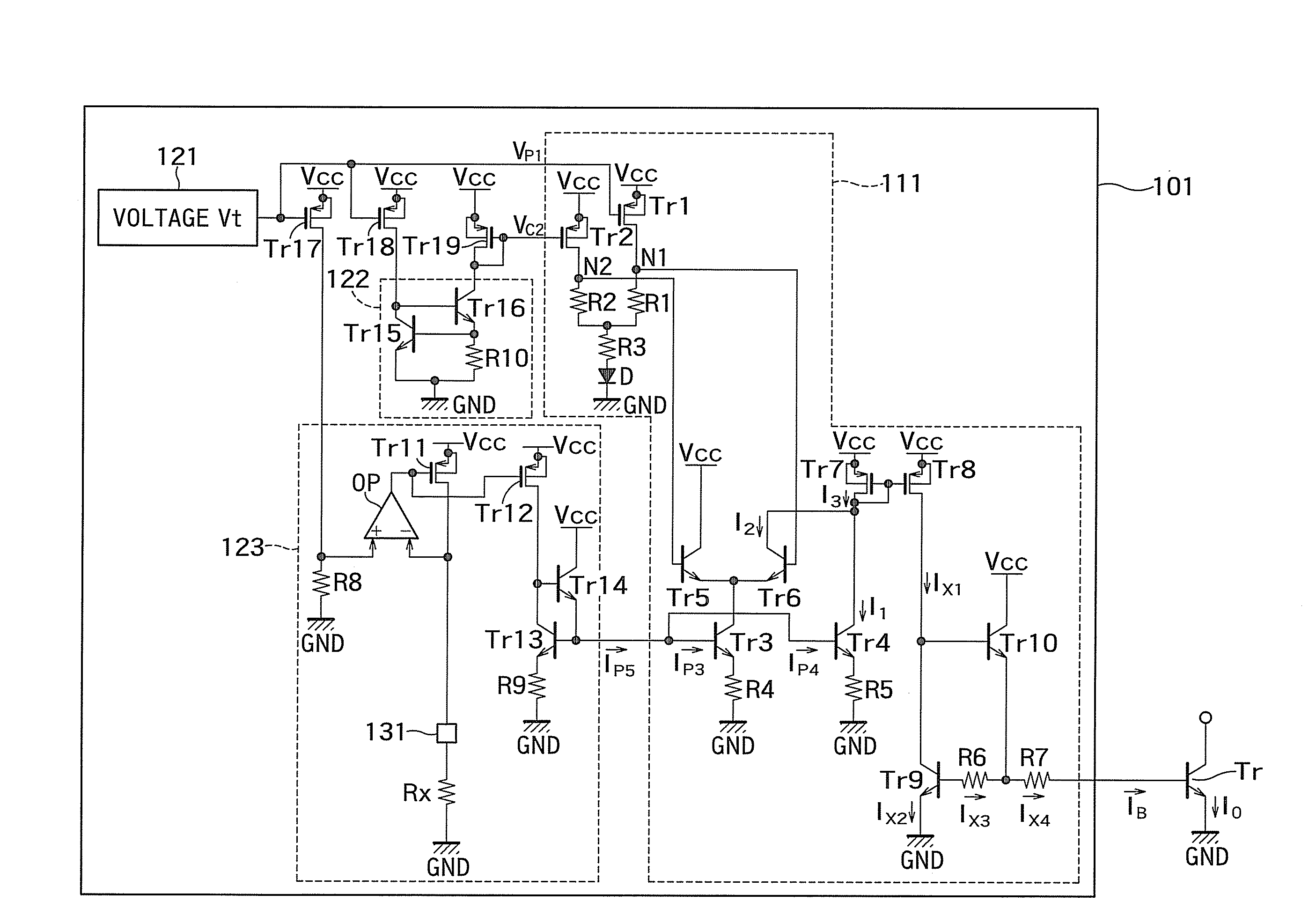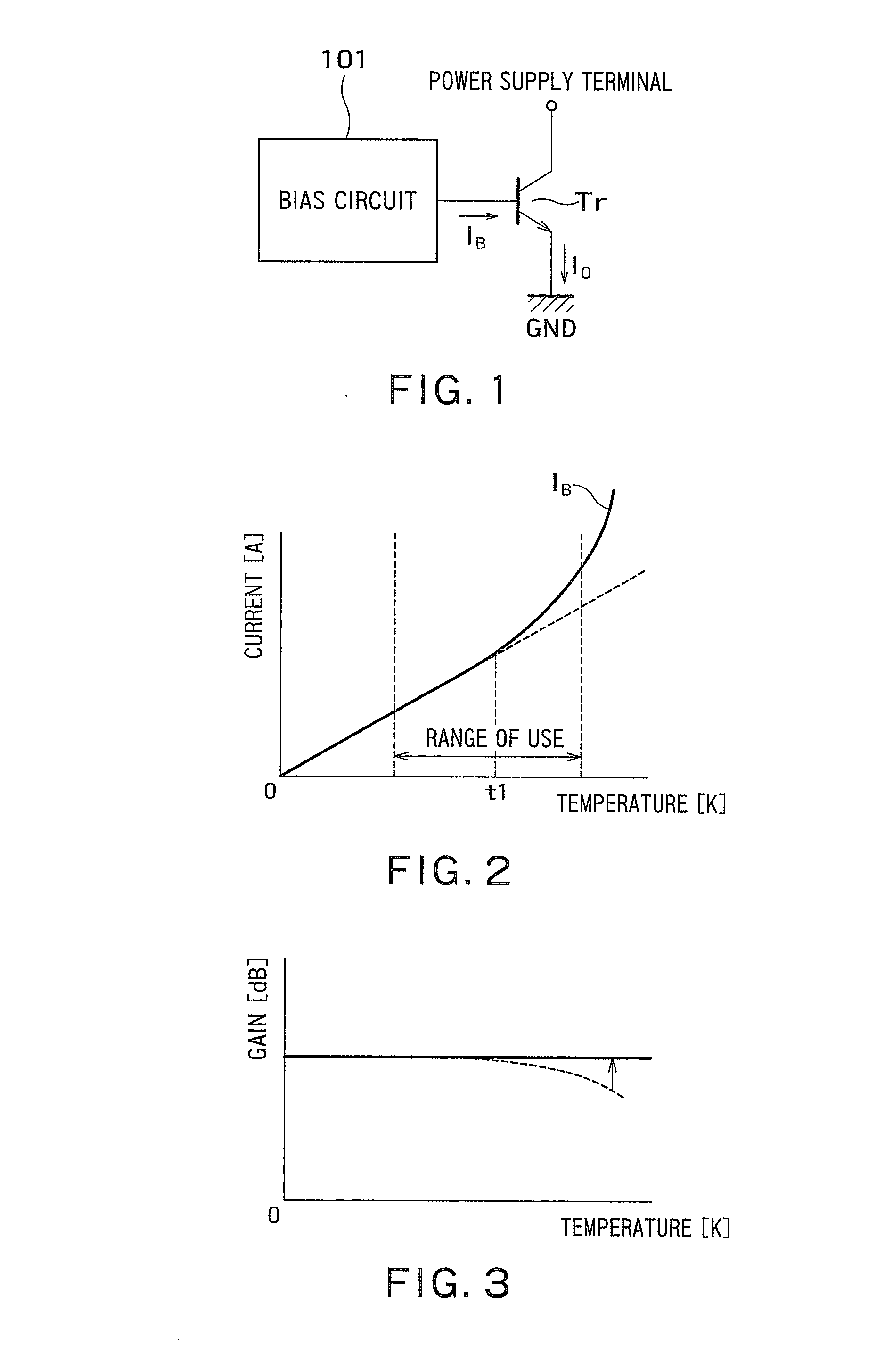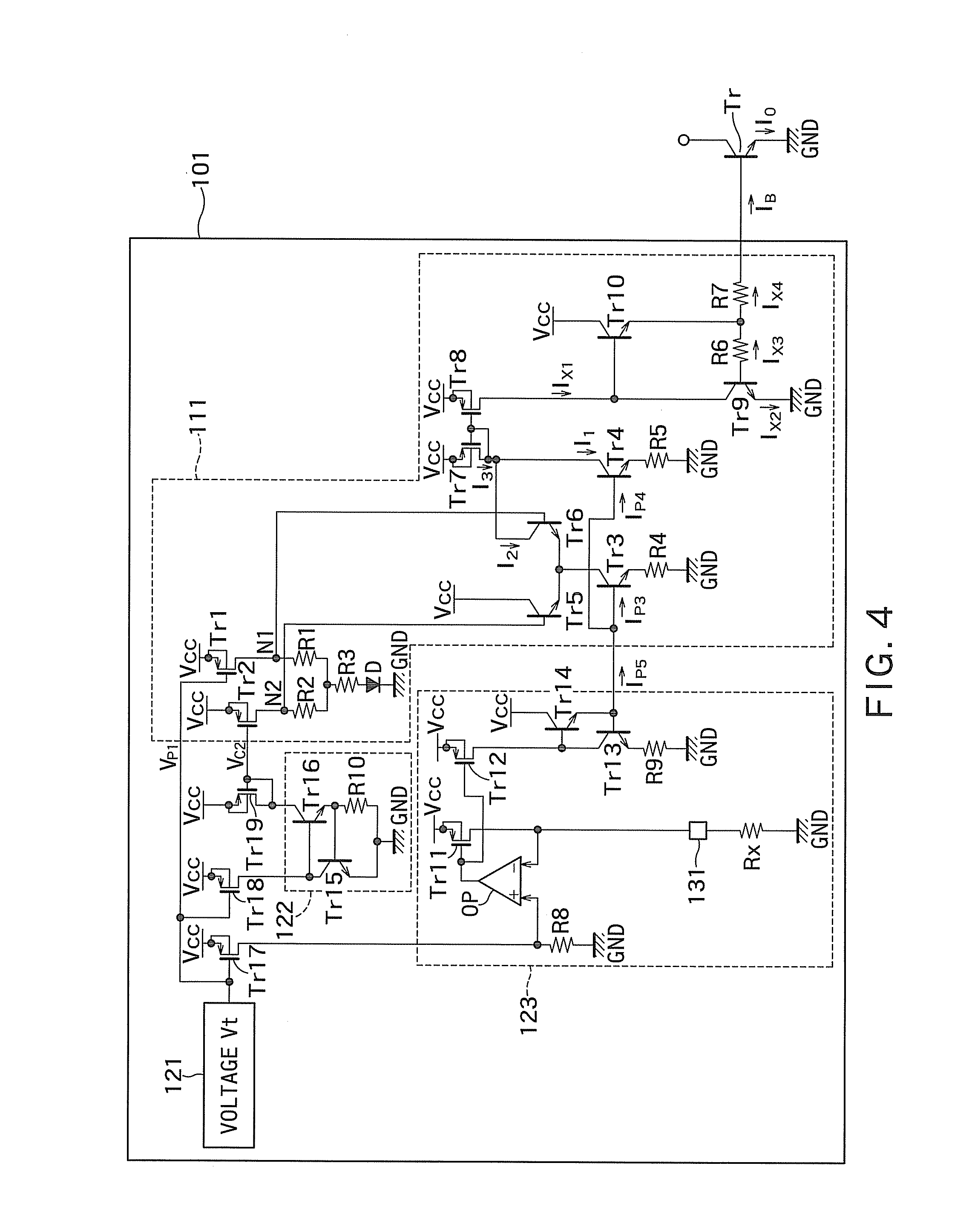Temperature compensation circuit
a temperature compensation and circuit technology, applied in pulse generators, pulse techniques, instruments, etc., can solve the problems of insufficient temperature compensation for the gain the inability to meet the requirements of a high-frequency processing circuit, and the gain decrease at a high temperature actually. achieve the effect of increasing the current valu
- Summary
- Abstract
- Description
- Claims
- Application Information
AI Technical Summary
Problems solved by technology
Method used
Image
Examples
first embodiment
[0025]FIG. 1 is a circuit diagram illustrating a configuration of a temperature compensation circuit according to a first embodiment. The temperature compensation circuit of FIG. 1 includes a bias circuit 101, and a transistor Tr serving as a power amplifier.
[0026]The transistor Tr is a bipolar transistor, and includes a base terminal connected to the bias circuit 101, a collector terminal connected to a power supply terminal, and an emitter terminal connected to a ground line GND. In the first embodiment, the transistor Tr is an NPN bipolar transistor. Alternatively, the transistor Tr may be a PNP bipolar transistor.
[0027]The bias circuit 101 is configured to output a bias current IB. The bias current IB outputted from the bias circuit 101 is supplied to the base terminal of the transistor Tr. Further, an output current IO is outputted from the emitter terminal of the transistor Tr.
[0028]The output current IO is controlled by the bias current IB. The bias circuit 101 adjusts the bi...
second and third embodiments
[0119]FIG. 11 is a circuit diagram illustrating a configuration of a bias current generating circuit 111 of the second embodiment.
[0120]In FIG. 4, the transistors Tr1 and Tr2 are the P-type MOSFETs. On the other hand, in FIG. 11, the transistors Tr1 and Tr2 are PNP bipolar transistors. Therefore, in FIG. 11, the control voltage VP1 is replaced by a control current IP1 that increases in proportion to the absolute temperature, and the control voltage VC2 is replaced by a control current IC2 that is independent of the absolute temperature.
[0121]FIG. 12 is a circuit diagram illustrating a configuration of a bias current generating circuit 111 of the third embodiment.
[0122]In FIG. 4, the transistors Tr3 and Tr4 are the NPN bipolar transistors. On the other hand, in FIG. 12, the transistors Tr3 and Tr4 are N-type MOSFETs. Therefore, in FIG. 12, the control currents IP3, IP4, and IP5 are replaced by control voltages VP3, VP4, and VP5 that increase linearly with respect to the absolute temp...
PUM
 Login to View More
Login to View More Abstract
Description
Claims
Application Information
 Login to View More
Login to View More - R&D
- Intellectual Property
- Life Sciences
- Materials
- Tech Scout
- Unparalleled Data Quality
- Higher Quality Content
- 60% Fewer Hallucinations
Browse by: Latest US Patents, China's latest patents, Technical Efficacy Thesaurus, Application Domain, Technology Topic, Popular Technical Reports.
© 2025 PatSnap. All rights reserved.Legal|Privacy policy|Modern Slavery Act Transparency Statement|Sitemap|About US| Contact US: help@patsnap.com



